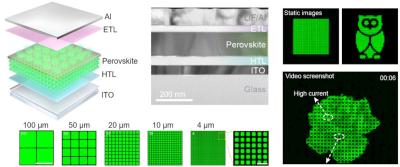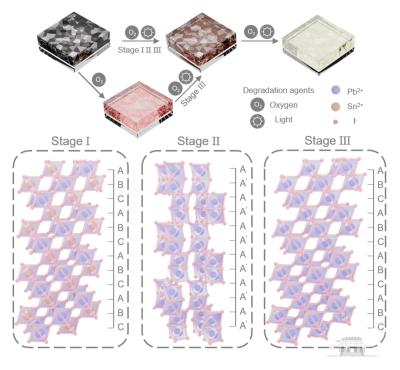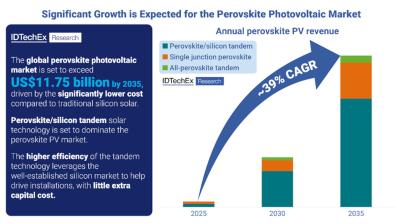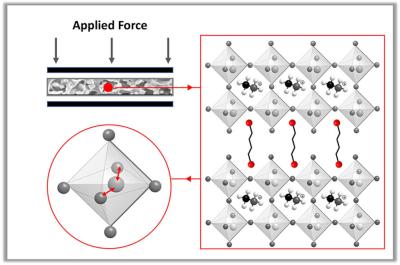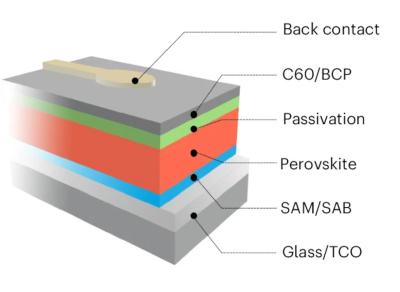Researchers demonstrate bright perovskite light-emitting diodes by using trifluoroacetate anions in 3D perovskite emitters
Researchers from Sweden's Linköping University, China's Hong Kong Polytechnic University, Northwestern Polytechnical University, Hunan University and Jilin University have demonstrated bright perovskite light-emitting diodes (PeLEDs) with a peak radiance of 2409 W sr−1 m−2 and negligible current-efficiency roll-off, maintaining high external quantum efficiency over 20% even at current densities as high as 2270 mA cm−2.
Device configuration and cross-sectional SEM image of the PeLED. Image from: Nature Communications
One of the key advantages of perovskite light-emitting diodes (PeLEDs) is their potential to achieve high performance at much higher current densities compared to conventional solution-processed emitters. However, state-of-the-art PeLEDs have not yet reached this potential, often suffering from severe current-efficiency roll-off under intensive electrical excitations. The team's new work hopes to help tackle this obstacle.




